The first known revolver appeared in the late 1500’s, some 300 years before the Mauser’s Broomhandle introduced the world to the joys of a reliable semi-automatic pistol. In the last century, revolvers have not only survived the introduction of semis, wheelguns have thrived. These days, Smith & Wesson can’t build them quickly enough to meet demand. While it’s one of those “rising tide lifts all boats” deals, point taken. Revolvers still have a role to play in modern self-defense. Yes, but what? The Smith & Wesson Model 60 provides plenty of answers, and a few questions besides . . .
Smith & Wesson introduced the Model 60 in 1965. It was a year marked by political upheaval and violence: the Watts riots, the first anti-war “teach-in,” the first major Vietnam ground battle and Martin Luther King’s march on Selma. It was a time when millions of uneasy Americans reckoned a good pistol was a good thing to have. Smith’s first production all-stainless steel revolver fit the bill.
The Model 60—chambered in .38 Special and fitted with a 2.125″ barrel—was an immediate hit. The waiting time for delivery stretched to six months. The heavyweight J-framed wheelgun went on to achieve infamy in 1984, when “subway vigilante” Bernhard Goetz shot four men with a first-year Model 60. In the intervening years, the Model 60’s popularity has kept pace with Smith’s larger and (especially) smaller revolvers.
Any why not? The Model 60’s design is simple, balanced and elegant. The five-round, exposed hammer, swing-out chamber wheelgun says revolver like a contour Coca-Cola bottle says Coke. The Model 60’s withstood the test of time to become a genuine classic.
There are a couple of significant differences between the original Model 60 and today’s gun. For one thing, the modern Model 60 has an internal lock. Some gun owners won’t buy a Smith & Wesson revolver with a built-in key-operated “safety device.” As regular TTAG readers know, my Smith & Wesson 686‘s lock failed. The hammer and trigger locked back and . . . that was that.
What are the odds of a Model 60 internal lock failure? What are the odds of it happening during a defensive gun use? Infinitesimal. But the possibility is vexing for American gun owners who bet their life—and the lives of their loved ones—on their firearm’s functionality. Provided, of course, they know about such things as lock failures. Truth be told, most gun buyers don’t. What’s more, they believe that a revolver is mechanically infallible; profoundly more reliable than a semi. Yes well . . .
[HTML1]
The video above shows what happens when you run 400+ rounds of cleanliness-challenged Sellier & Bellot ammunition through a Model 60 without giving the gun a damn good scrubbing. A revolver that doesn’t work! This will come as no surprise to informed gun guys and gals, many of whom consider firearms maintenance a perfect outlet for mild to wild OCD. The wider point: all guns can fail.
Equally, most guns don’t. In this age of high-quality, value-priced semi-automatic polymer pistols, buying a $700 revolver for its “superior” reliability can no longer be considered a “no-brainer.” Especially when there are obvious disadvantages to revolvers in general and the Smith & Wesson Model 60 in particular.
Statistically and practically speaking, the ability to reliably hit what you’re aiming at—say, a person trying to kill you—is more important than the remote chance that your [well maintained] handgun will go “click” instead of “bang.” With the Model 60, accuracy at combat distances is not a ballistic slam-dunk.
I’m not saying the Model 60’s trigger pull is heavy, but have you ever tried lifting an SUV with your index finger? Nestling the go-pedal in your distal joint affords a smoother pull—but only just. Jerry Miculek could shoot the eye out of Birchwood Casey zombie target at ten yards with a Model 60. The rest of us, not. Weak-handed, inexperienced shooters? Not at all. Not even close.
This despite the Model 60’s accuracy-enhancing heft. The handgun weighs-in at 24.5 ounces. A Model 60 with a 3″ barrel [shown] loaded with .38-caliber rounds eliminates recoil issues for all but the most squeamish shooter. The 60’s four-finger rubber handle provides the kind of secure grip denture makers dream about. If the Model 60’s blade front site wasn’t black (on black) and the trigger was a bit easier . . .
Fired single-action, the Model 60 makes mortal men into Miculeks. You (and people less talented than you) can put three out of five bullets through the same hole at five yards. Gun gurus don’t recommend shooting a revolver single action—ever. Needless to say, the Model 60’s double-action accuracy problem gets decidedly worse when you load it with the [otherwise] ideal self-defense caliber: .357.
There’s the second major difference between ye olde Model 60 and the one sitting on my desk: the words “S&W .357 MAGNUM” etched into the barrel’s left side.
If you fail to stop a threat with five .357 hollow-point bullets, there’s only one possible explanation: you missed. In this case, it’s a perfectly credible excuse. The Model 60’s double-action trigger is heavy enough with .38’s. Empty a Model 60 loaded with .357’s as fast as you can (call it “point shooting” instead of “panic shooting”) and you can miss a target at three yards. I know. I did.
Again, shoot the Model 60 single action and it’s bullet on top of bullet. Bad guy down. BUT if you switch from double-action to single-action mode—and maybe even if you don’t—you WILL shoot a round without “meaning” to. Hence the gun guys’ stricture against cocking a revolver’s hammer when trouble comes knocking.
The Smith & Wesson Model 60 highlights a simple, inescapable fact: for most people, a revolver’s safety-oriented heavy ass trigger pull makes it a “belly gun.” At bad breath distances, you can aim a wheelgun towards the bad guy Jack Ruby-style and pull the trigger and eliminate the threat. Unlike a semi, you can even put it against the bad guy’s body, pull the trigger and git ‘er done. Only . . .
You really don’t want to shoot a bad guy at bad breath distance (think knife). The more real estate between you and the life-threatening perp the better. By the same token, the more distance ‘twixt you and your foe, the greater the need for accuracy. The less you want to be carrying a Smith & Wesson Model 60 revolver—especially with .357s on board.
If you’re a casual shooter looking for close-in armed self-defense, a hammerless stainless Smith & Wesson 642 firing hollow point .38s is a more sensible choice. The 642’s smaller handle’s not good, but the smaller gun’s more concealable, lighter and less of a bother to brandish than the Model 60. If you want a bedside revolver, the next-size-up 686 is considerably more intimidating and vastly more controllable—even firing 357s.
To paraphrase Inspector Callahan in Magnum Force, a man’s got to know his gun’s limitations. The five-shot Smith & Wesson Model 60 is what it is: a beautiful, superbly made handgun that can fire maximum protection .357 rounds. Whose owner is well advised to treat his pricey revolver to a quality trigger job, STAT.
SPECIFICATIONS
Model: Smith & Wesson Model 60
Caliber: .38 Special/.357 Magnum
Capacity: 5 rounds
Material: stainless steel frame, stainless steel cylinder
Weight empty: 24.5 ounces
Barrel Length: 3″
Overall length: 7.5″
Front sight: black blade
Rear sight: adjustable
Grip: synthetic
Action: single/double action
Frame size: J-frame (small), exposed hammer
Finish: satin stainless
Price: $759 msrp
RATINGS (out of five stars)
Style * * * * *
A classic.
Ergonomics (carry) * *
Slightly too big for pocket carry (exposed hammer too). When compared to the convenience of a smaller stainless hammerless snubbie, the Model 60’s “extra” accuracy and .357-compatibility’s not worth the hassle.
Ergonomics (firing) * * * * *
The Model 60’s four-finger grip sits in the hand like a baby in its mother’s arms. No recoil issues with .38s. None. Self-defense .357s are more than merely manageable.
Reliability * * * *
As long as you clean it and love it, it will not let your down. Unless the lock fails (star removed for not removing it).
Customize This * * *
The sooner you swap out/paint the black front blade, the better. Give serious thought to a professional trigger job. Actually, just get one.
OVERALL RATING * * * *
A timeless design still built like the proverbial brick shit-house, whose Sumo-class trigger pull works against it. Unless it doesn’t.
[TTAG’s targets are supplied by Birchwood Casey]

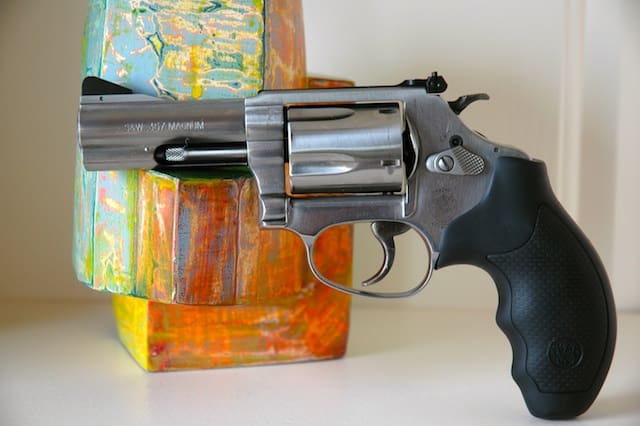
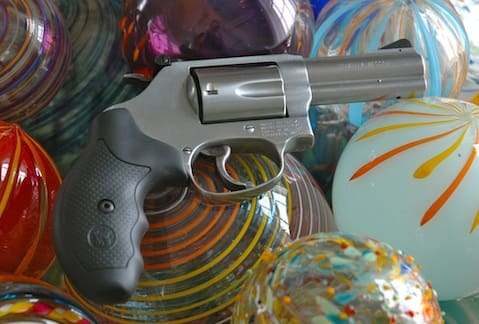

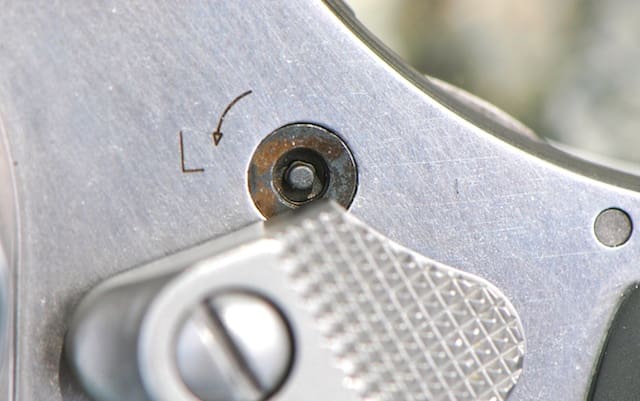
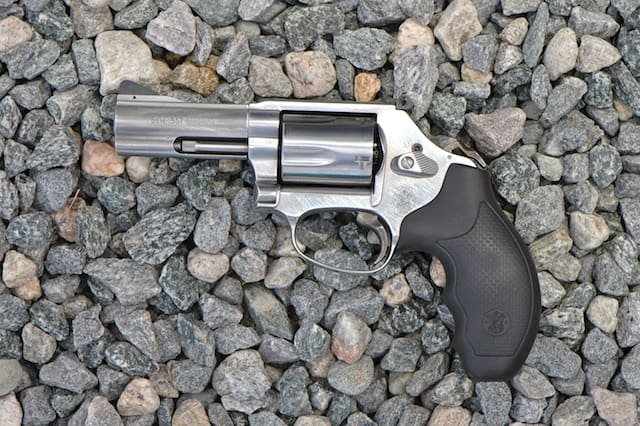
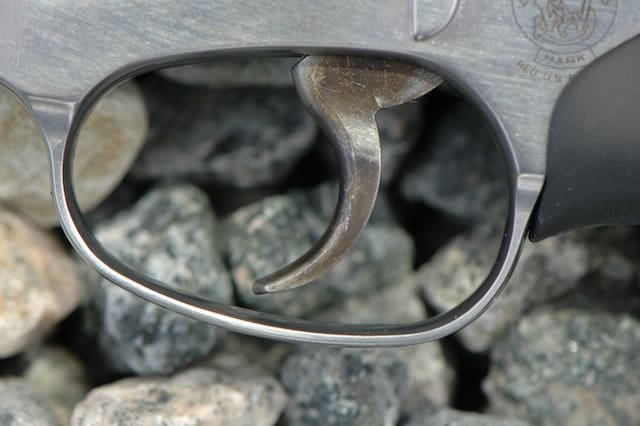
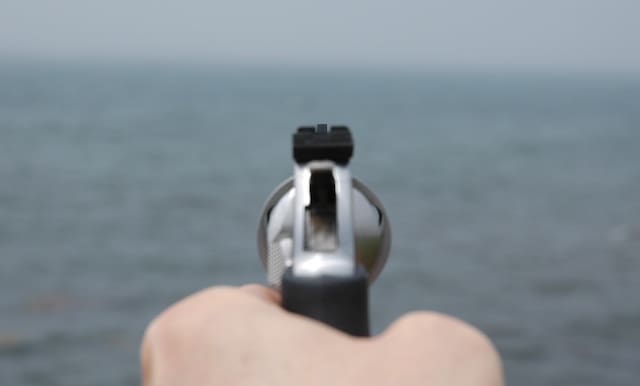
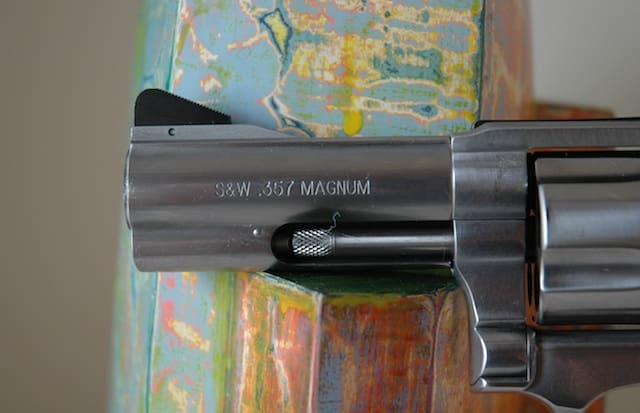
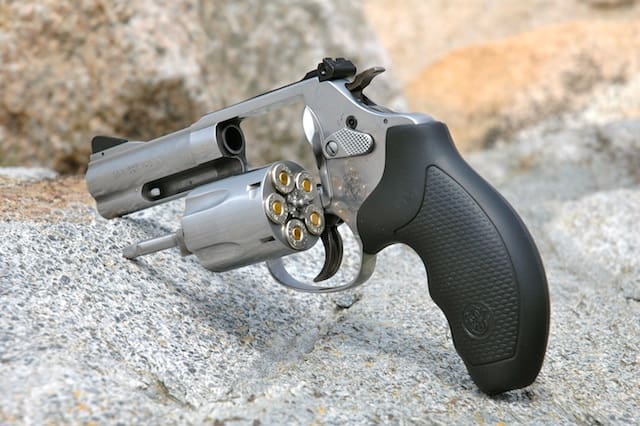
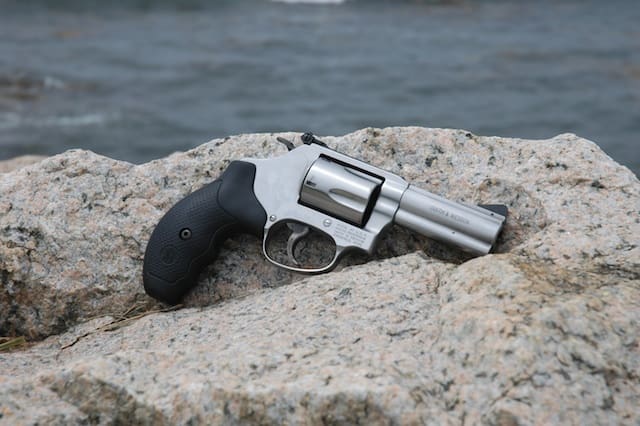



Just about like an SP101, but giving two or so ounces. The SP’s grip soaks up the .357 recoil pretty well. And yeah, I rented a couple of Smiths at an indoor range in Seattle, a model 66 was so gummed up, I couldn’t fire it at all. Come to think about it, I had the same problem with an SP at the same session (being from out of town and needing to rent). I don’t know if it was just because I hadn’t had a chance to shoot for a while, but the LCP I tried really spanked my hand, and the Walther PK380 was snappy too. Just shows the need to get in frequent range time.
Interestingly, I just had a trigger job done on my m60 (2.25 barrel) a few weeks ago. My gunsmith noted that older revolver’s steel parts would wear in over time but stainless simply does not wear. For $60 he replaced the springs and polished the sear and other parts and now it shoots like a dream.
S&W trigger jobs are usually simple and affordable, and can turn a heavy factory pull into a tumbler of Kentucky bourbon: light, sweet and smooth.
It seems like most stock revolvers these days need Wolff springs and some strategic polishing before you can get a trigger pull that you could call decent. The older guns, like my Victory Model , just seem to have better triggers.
This looks like 357 you let me shoot last night at AFS, and I really liked it. The double action was the stiffest I’ve ever tried, but the single action was terrific and it’s a really nice looking gun that fit my hand very well. This would make a great carry gun if it had a quality trigger job.
The trigger is a typical, mediocre S&W bang switch. Heavy but smooth, it doesn’t creep but it stacks more than a farmer bailing hay. Then, just when your trembling hand is aching for relief, the trigger breaks like glass. To shoot this revolver accurately, you need either kung fu grip or a nice trigger job. The village smithy can remove the dreaded internal lock while he’s fixing the trigger. Once the trigger is refined and the lock is castrated, you will enjoy shooting one of the finest revolvers ever made.
Thanks for the review. “Any why not” might be “And”?
P.S. Bobbed the hammer, too. No mo’ snags!
Trigger job, bob the hammer, install a shield to send all the flame and debris forward (instead of out the sides) triple the capacity and you’d have a real weapon there.
Just a little grumpy tonight. It will pass.
The gun itself is pretty nice looking. That handle – or grip, I guess – just looks weird. I wouldn’t buy that gun just because of the grip.
I bought a set of lady smith wood grips on my new model 60 now its a pretty gun after that and a polish with flitz , shines now.
Surely you are joking. Grips are not only easy to replace, but the way to personalize your firearm. You can keep the orignals or discard them as you wish. Think Ahrend’s, Altamont, Hogue or any number of excellent grip makers. Not sure i’ve ever kept a pair of stock grips on any revolver. This model of S&W just loves Altamont’s for comfort, and also for looks.
I know it is customary to complain about Smith triggers and to compare them to the revolvers of yore. Keep in mind however how many times the old revolvers have been fired and dry fired. Each time a revolver is cycled its parts are polished. This is particularly true of stainless guns.
I have k frame that I purchased new in the early 80’s through to the present. Trigger pulls were never particularly good when new and all have improved.
I agree. Dryfire practice not only polishes the internals, but also builds your trigger muscles. Two for one! It is especially important for revolvers. Otherwise, you can be unaware how much you are dipping the front sight during double action fire. I used to think that snapcaps were only used by the truly anal, but have realized that revolver reloading drills are useful as well.
I have noticed something about S&W revolvers. Double action trigger pull gets better as the frame size increases. My model 29 has a much nicer trigger than my model 66. And yes, J-frames are a bit on the stiff side.
I’m pretty new to handguns, but I’ve been told that it was not good to dry-fire the older model revolvers, so I’m wondering about what you said about them having been dry-fired. Am trying to learn all I can about revolvers.
Does anyone know when it began to be all right to dry-fire revolvers, what year?
Thank you
Do not dry fire any pistol with the firing pin made on the hammer. It can cause the pin to break off.
No dry firing 22s with pin or no pin on the hammer either; ruins the firing pin.
The “failures” you speak of are because of buildup between the forcing cone and the cylinder. Tolerances are tight and a .005 gap quickly gets gummed up after hundreds of rounds between cleanings.
I think that one should clarify that these failures are not random events as in some semi-auto problems, but a simple maintenance item that can be 100% prevented.
Rebecca,
Not buying a classic wheel gun, like the Model 60, because you don’t like the looks of the grips is pretty silly. Just put some aftermarket grips on it and call it good. J-frames are easily modified, as far as grips go. And once you find the grips that work for you, you’ve got a friend for life.
I have 2 older model 60s ~ one with a bobbed hammer, one without. I’m looking to swap the bob out for a standard hammer, but have had trouble finding out whether I should be using the .240 or the .375…any knowledge to share on this? Incidentally ~ my most favorite revolver…ever. ~Shannon
i have a s&w 60 3″ barrel and a 640 they both shoot perfect. the trigger pull is no problem on either gun. grouping shots is a little wider with double action. with the 640 since it is hammerless is your only option. at 15 to 20 feet i still hit within 4 or 5 inches of dead center of the target. in real life you’re history. i think s&w got it right.
I just purchased this S&W Model 60 and I agree that the heavy double action trigger pull is very discouraging. I do love the single action, and it is a very accurate way to shoot at the range BUT… I bought this as a CCW. One way to counter the heavy trigger pull and gain some accuracy is to change the grip to a Crimson Trace laser grip (like I did) but I think I will still get a good trigger job. I am debating getting it bobbed but I will be removing the internal lock too. I use gun locks so I feel this is a pointless and potentially disastrous redundancy. In any case I am happy with the purchase; will be happier when I take it to the smith. Happy shooting all!
One of the most beneficial gun reviews I’ve read.
you act like you are trying to hold a cannon, and trying to squeeze the bumper off that
SUV. i shoot my model 60 with 3″ barrel all the time. i never have a problem hitting any target at any distance. i put 50 to 100 rounds through it every time i go to the range.
it has yet to fail. i clean it after every trip to the range (like you should). and i promise you, i would 100% count on this gun in a life or death situation. and i also shoot 110gr or
125gr 357 magnums with no problem. this is one of the best and most accurate guns on
the market. hands down. (no trigger job,) ( no bobbed hammer.)
I have a 3″ Model 60-4 from the early ’70s, stamped for .38 Spl. only. The DA trigger pull is ideal for a defense gun — heavy enough to prevent inadvertent firing if your finger has strayed to the trigger, but not so heavy as to be inaccurate. The SA pull approaches target quality. I have replaced the ramp front sight with Smith’s fiber optic sight, and it serves as a reference point for instinct shooting from the isosceles stance with the revolver at eye level and eyes focused on the target. The Winchester Silvertip .38 Spl. defense load with the “flying ashtray” hollow point is accurate and manageable — I wouldn’t want to shoot .357s from a 3″ barrel. One drawback: it’s hard to find CCW holsters for J-frames with barrels longer than 2″. The Uncle Mike IWB holster in size “0” works.
I have the model 60 with a 4 inch barrel. I had to have a custom holster made because I could not find one anywhere. I had it made by Erik at Sideguard Holsters. See a pic of his awesome work here: http://home.roadrunner.com/~joeschmucker/MyGun.html The only problem I have is that when I shoot 357 rounds, the spent cartridges are REALLY hard to eject. 38spls are fine. I think the 357 cartridges expand at the front making it hard to eject. I actually pushed the cylinder off a little before I realized it was coming off. Anyone else have this issue? Any suggestions on aftermarket grips that don’t cost half as much as the gun would be welcomed.
DeSantis makes a perfect holster for the model 60 3″. In fact it has the S&W logo stamped on it with thumb break OTP. I actually found it on the Smith and wesson site
With regard to deactivating the lock on the newer models: I’ve seen warnings about a modified weapon exacerbating the legal nightmare of a defensive shooting. Something to think about…?
I find the model 60 to be a great gun….I think the writer’s conclusions are off allot. I find this gun to be easy to conceal, easy to control, and incredibly accurate (head shots at 30 yards). I find the trigger to be smooth and really nice. I’ve shot many many many revolvers and the 60 is a gem of a shooter and probably the best kept secret in the CCW market. I think the writer tested a lemon
Charles… considering a model 60… for in-the-woods carry as well. have you ever shot it with 180gr or 200gr ammo?
Thanks
I carry model 60 3 inch with hi vis. front sights for conc. carry everyday ,I find it to be very comfortable and accurate .I can hit consistantly in double action up to 20 yards and single action up to 40 yards I also have used it to take small ,I once shot a rabid raccoon at 40 yards not once but twice I am very pleased with the s.w. 60
I got the model 60 Lady Smith in 357. The gun’s grip is designed for a woman’s hand, but is also suitable for a man’s hand if it isn’t extra large. 38spl+P loads feel like nothing, however, 357 loads are quite noticable. I decided to try something in between. I loaded up some 38spl+P nickle cases with 7 grains of Bullseye and a SPM primer behind a Honady 125 grain XTP . . . MOST EXCELLENT RESULTS!! Nice and stout, but not too strong. I love it and so does my wife. She still prefers 38spl+P loads for target practice. What a nice little revolver.
Are you sure you mean 7 grains of bullseye in a .38 special case? The load I’m using from my Lyman manual lists a max of 3.7, if I remember correctly, for .38 +p with a 158 grain lead semi wadcutter. If I’m not mistaken, 7 ish grains of bullseye is for 357 cases. Anyway, I just didn’t want someone to load that up without checking it first.
I have a model 60 pro, and love the feel and concealability of, but have been having a hard time shooting accurately. In addition, I’m having major leading of the barrel with my lightly-loaded .38 reloads, with speer lead bullets. In the process of trying to figure it out. I put a fiber optic front sight on, but that’s harder to shoot then the stock one, because the front sight blade is rounded, and not perfectly symmetrical, which makes it harder to center when you can’t see the red dot (as opposed to the squared off stock front sight). I’ve never had such a hard time shooting a gun accurately. Maybe I just need to keep playing around with bullet weights/charges.
Update on my 3″ model 60 pro. Who knows if anyone’ll ever read this, but maybe it will help somebody. My biggest success yet has been to ditch the factory grips for good. The ones on the 60 pro look beautiful, but they are useless. The gun shifts in the hand with every shot, even with .38s. I have some wood hogue grips with finger grooves that stay in place better. Rubber hogues were even more comfortable, but they really gripped on my shirt when carrying iwb.
I also ditched the soft speer swaged lead bullets. Never use these. If you must, invest in a lewis lead remover and be prepared to clean lots of lead out of your barrel, forcing cone, and cylinder throats. I’m finding that 125 gr XTPs shoot accurately and are manageable in 38+p and medium .357 loads. 140 and 158 gr recoil much more in this little gun. I have had some success also, with some harder cast 158 gr SWC, over very light charges of bullseye, 3 gr. They shoot softly and accurately, with very minimal leading. At 4-ish gr of bullseye, they were leading more.
With better grips, practice, and ammo experimenting, it’s starting to turn into the nice little shooter I was hoping it would be!
I won in a raffle, a new in the box model 60 357 . It has been threw the performance center at S+W and is prefect. Stainless steel model. I would like to know the value of this gun. Anyone have a idea?
I paid about 5 or 600 for mine (used but in perfect condition) about 2 years ago.
Sweet gun and very very concealable.
Joe
I just read the Posted on July 9, 2011 by Robert Farago article at the top of this column. I agree with everything Robert said. I’m glad to know I’m not the only one who has a hell of a time being accurate with double action .357 rounds in it. I thought it was just me! I am getting a trigger job and the hammer bobbed too.
I just read the Posted on July 9, 2011 by Robert Farago article at the top of this column. I agree with everything Robert said. I’m glad to know I’m not the only one who has a hell of a time being accurate with double action .357 rounds in it. I thought it was just me! I am getting a trigger job and the hammer bobbed too.
Funny, they fixed it in the Model 60LS, yes Lady Smith. I bought one for my wife and she even let me shoot it. Great gun but less pull than the regular mod60 so smoother feel. Great release pulling DA. SA is like butter. If it didn’t say
lady, I might even carry it lol
Just so we are ALL CLEAR, the second picture on this thread at the top is not and I repeat NOT the proper grip for a revolver. That is a good way to lose the tip of you fonger or at least your fingerprints.
Could you clarify why that is not a proper grip? How else would you grip it? Not being a jackass, I’m fairly new to the gun myself and I don’t know what is being done incorrectly.
Hello Joe S,
It doesn’t look like anything is wrong with the grip on the revolver in the picture you mention, if you’re talking about the person’s finger lying along the gun under the cylinder. That’s the position you should have your finger in when not firing to keep your finger out of the trigger guard and off the trigger. Is that what you were asking about? If you were to somehow fire a revolver with your finger in that gap where the person’s fingertip is in that picture, they’d surely get bit, but good.
I marked the 38+p nickle cases (yes 38) prior to loading them to soft 357 standard with 7 grains of bullseye. (the 38 special case is just fine for the load, it is the 38 special frame that would not be). I use that load for 125 grain XTP hollow points. It is a fine round. If you own a 38 special as well as the 357 lady smith, then you would not want to make this load as it would then be possible for someont to accidently load up the special with the short 357 loads.
You guys sound like a bunch of pussies. I own a model 60 with a 3″ barrel (double/single action). I have no trouble with the trigger. My accuracy is superior, and at far more than 5-10 feet. The grip is outstanding. I wouldn’t own anything else.
I own an early model 60 with PM grips and a 1.9 inch barrel. Its chambered solely for regular 38 specials and not the +P. Been with me for three years, bought it from a good friend of mine. I’ve shot hundreds of rounds from it already and still its condition never diminished a bit. Accuracy is quite good and it is a very comfortable gun to shoot. Glad I have one like it for concealed carry and personal defense.
Apex Tactical sells a sweet J-frame duty DIY spring and firing pin kit. Without any polishing it brings the pull down to 8 – 10 lbs.
I have a 640-1 machine etched model. Pretty as a picture. As a beginner I traded my my 38 for this one. Yes it kicks like a mule with .357’s. So I just train by starting with 38’s and work my way up to .357 hollow points. I find security in the hard to pull trigger. No kid is going to up and grab it and pull the trigger like on pistols. But I have no kids around PTL.
I thought about the trigger job and comfort grips but I like itnthe way it is. I’m disabled so I use wheelchair gloves most of the time that takes some of the shock out of the shoot.
I find this gun to be the the best of beauty and the beast. I got an excellent price to get it and feel quite blessed to have such a fine instrument to trust my life with.
I have been trying to buy model 60 chiefs special stainless since 3/27/2014 at which time it was paid for when my wife got her lady smith.I always deal with Kjergaard sports in sw mn.He is one of the largest private dealers in the area. He has tried all his distributors and can find nothing. apparently s&w has been making more of the poly framed hand guns because they are faster to make involving less machining and time.It appears to me those of us that like safety and simplicity of a revolver have been thrown under the bus by s&w in favor of a larger profit margin.At least the Ruger SP101 is still available. I now own several s&w guns but if that is the way they are doing business now there will not be many more.
I ordered and paid for a 3 inch M60 a year ago. My dealer still has failed to deliver. Dealer even signed with one of the larger distributors in an extra effort to get the piece. SW customer support told me they’re still making and shipping M60s every week. Dealer says the problem is with the annual allocations, and favored distributor customers jumping the waiting line. Any info would be appreciated.
Now I’m expecting the same problems in getting a matching .22 M63. Help!
I’m lucky enough to own a ruger sp101 and a Smith model 60. Both snubbies. My take is this….and this is after trigger jobs on both. The Ruger sp101 is just a hair better. Why? Weight and toughness. Being a bit bigger and built more sturdy the ruger just feels and shoots like a little tank. Where my model 60 feels a little lighter and more delicate. Not to say it’s a poorly made or weak gun. But the sp101 just feels more durable. And it controls recoil significantly better too I might add. One note though after the trigger job and replacing all the internals the model 60 has the better trigger by miles! It’s colt python smooth. One of the smoothest revolver triggers I have ever squeezed o be honest. The debate will always rage on on the best snubbies in 357. But I would say the ruger is the winner here by a nose
I have owned and carried my Model 60 that I got in 1979 ever since then working undercover for the police for years. I found it easy to shoot, double or single action, and easily concealed. In fact during an undercover drug deal, I even had a dumb drug dealer search me and not find it with it simply tucked into my waist band. As far as accuracy, I have had no problems shooting at 25 yards with it.
>>The heavyweight J-framed wheelgun went on to achieve infamy in 1984, when “subway vigilante” Bernhard Goetz shot four men with a first-year Model 60.
Wiki and other sources I’ve seen indicated that Goetz used a Smith and Wesson model 38 (not 60) during the famous incident you refer to. He emptied five shots out of the gun in under 2 seconds, scoring four hits on four different assailants.
The model 38 “airweight” is basically the same gun as the model 60 “Chief’s special”, but with a lighter weight aluminum alloy frame instead of the model 60s stainless steel frame.
The model 38 hasn’t been produced in many years, but the current projection Smith 637 “airweight” is basically an upgraded version of the same thing, and is still very popular for concealed carry.
The heavy trigger pull is overcome by practice. I exclusively shoot revolvers and learned to shoot on a j frame. All of my j frames I have or had keep the stock springs and no trigger jobs. At the local range we shoot handguns at 15 yards. I can shoot as good as, and in some cases better than my friends and their semi autos (of all makes). Just takes practice. I also never shoot my j frames single action and hardly the K/L/N frames either. The key to shooting these revolvers is practice and not to get discouraged. Once you get the hang of them they’re easy to get all 5 on target during rapid fire at 7 yards. But I agree, they’re not for everyone. If you can’t put in the time to practice (and practice, and practice), with them you might want to look elsewhere. But imagine the look on your buddy’s faces when you can get all 5 shots on a target out at 50 yards (slow double action), with a “belly gun”…
Love it Jim. For the first while, I thought there was something wrong with my gun. It really just takes getting used to as you say.
Been carrying my model 637 for a few years now. Great gun by the way. Just bought a model 60 .357 mag. 2.125″ barrel. Had to order it,Three weeks to get it in !!! Not a easy gun to find right now, trust me. Something about S&W has a lot of their handguns on hold and are making assault weapons?
I really would like to know if readers have actually killed hogs, coyotes, rabbits, etc with the 3 inch model. I own a half dozen J frames and recently lost a model 640 I have had for 20 years…..carried it on a hunting trip and on a 12 hour trip by 4 wheeler and about 2 mile hike it dissappaered out of a holster concealed under my double insulated bibs….now my 640 had a wonderfull trigger….killed 3 skunks, a badger, a racoon and lots of snakes….killing snakes with a double action only means the trigger is very good…I carry a model 637 or classic 36 much of the time….I just want the 3 inch in 357 for hiking in hog, coyote and cougar country….I carry bigger when bears are present….so my question is, does anybody have any actual experience on off hand shooting of animals…..? I really appreciate any info….
You mention heavy trigger pull, but don’t measure it? I know trigger pull can vary a bit depending on how or where on the trigger you measure, but at least give us readers some idea.
I just bought a Model 60 Pro 3″, but have not taken delivery yet.
From what I have read thus far, it is very similar to my Ruger SP-101 3″.
If you read the other article on this website about the 60 model, there are many comparisons to the Ruger SP-101.
Does anybody have any constructive advice about any customizing that should be done on the Pro 60 or the SP-101?
Thanks.
Love the site– really individual friendly and great deals to see!
Great looking web site. Think you did a great deal of your very ownyour very own html coding
I’ve got the Model 60-8. Do I have to hang on for dear life when shooting magnum loads? Oh HECK yes! But after shooting.44Mags & 454 Casuls I’ve come to accept recoil as a byproduct of performance. PRACTICE IS the key to mastering the .357 snubbie and pistol shooters understand that marksmanship is dependent on the shooters discipline. It’s an absolutely great piece.
Comments are closed.